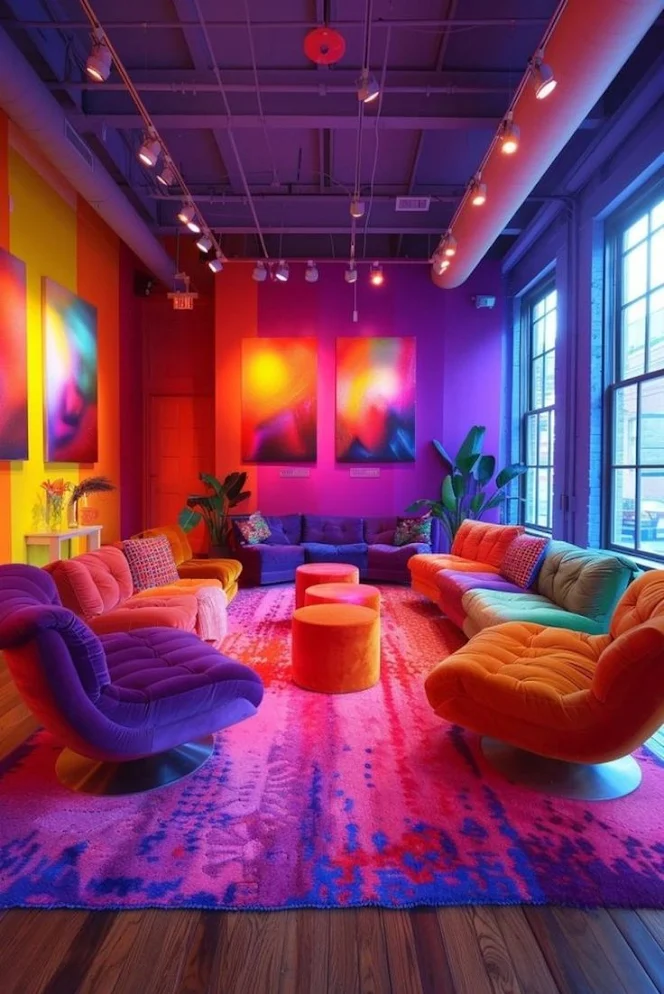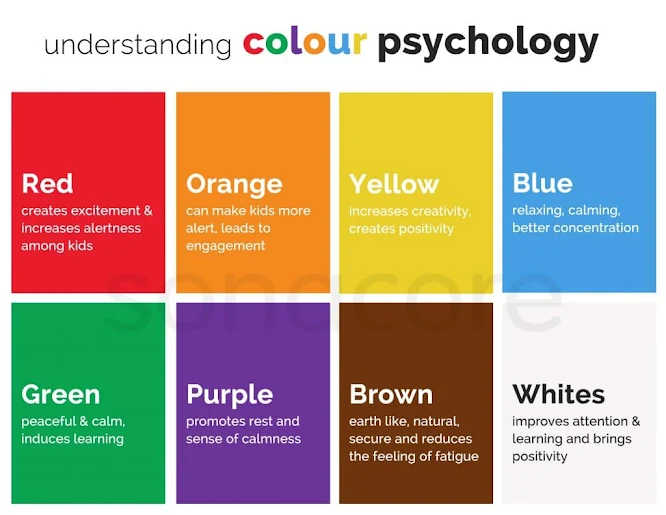The Impact of Color Psychology on Your Home Decor
Colour has the ability to change rooms, affect emotions, and bring harmony into your house. There is science involved in selecting the appropriate colours for your design, even if it may appear like an aesthetic choice alone. Colour psychology is an important aspect of home design because it examines how different colours influence our emotions and behaviour. This article will discuss the effects of colour psychology on interior design and show you how to apply it to make a room that feels comfortable for you in addition to being aesthetically pleasing.
Understanding Colour Psychology
The study of how colours affect human emotions and behaviour is known as colour psychology. Depending on personal experiences and cultural connotations, each colour elicits a different set of emotions and reactions. For example, blue is commonly linked to serenity and tranquillity, but red may arouse sentiments of passion and vigour. Knowing the psychological impacts of colour will help you choose your home design wisely, making each area useful and conducive to the environment you want.
The Psychological Effects of Common Colors
Let's examine some prevalent colours and their psychological implications in more detail.
1. Red: Energy and Passion
Powerful and evoking, red arouses passion, enthusiasm, and energy. Given that it raises blood pressure and pulse rate, it's a fantastic option for rooms like dining rooms or home gyms where you want to encourage movement and excitement. Red is a powerful colour, therefore it works better as an accent than as the main hue in a space.
2. Blue: Calm and Serenity
Blue is frequently linked to serenity, peace, and quiet. It is the perfect colour for rooms where relaxation is essential, including bathrooms and bedrooms, as it has been demonstrated to lower blood pressure and calm down the pulse rate. Lighter blues provide a more airy, calming impression, while darker blues give a sense of stability and depth. Various colours of blue can have varied impacts.
3. Yellow: Happiness and Optimism
As the hue of sunshine, yellow is frequently connected to joy, optimism, and vigour. It's an excellent option for areas where you want to create a cheery and welcome ambiance because it can arouse sentiments of warmth and enthusiasm. It's recommended to use yellow sparingly though, as too much of it can be overpowering.
4. Green: Balance and Renewal
Being the colour of nature, green is frequently connected to development, balance, and rejuvenation. It's a calming hue that helps ease tension and encourage calm. In addition to being a terrific colour choice for practically any area in the house, green comes in a variety of tints, from rich, earthy tones to soothing pastels.
5. Purple: Creativity and Luxury
Purple has traditionally been connected to creativity, nobility, and luxury. It's a colour that may evoke feelings of grandeur and sophistication while also inspiring the imagination. Deeper purples generate a sense of drama and richness, whereas lighter tones of purple, like lavender, provide a relaxing effect akin to blue.
6. White: Purity and Simplicity
White is a colour of simplicity, cleanliness, and purity. It's a colour that works well in a variety of settings, opening up rooms and giving them a blank canvas to highlight other colours and design aspects. White might seem light and fresh, but too much of it can also look cold or sterile, so it's crucial to balance it with other hues and textures.
7. Gray: Sophistication and Versatility
The neutral shade of grey radiates sophistication and modernism. This adaptable hue can serve as a foundation colour to establish a serene and well-balanced space. Gray is a common colour choice for contemporary and minimalist designs because it blends well with a wide variety of hues.
Using Color Psychology in Different Rooms
After talking about the psychological impacts of various colours, let's talk about how you may use this information in different spaces of your house.
Living Room: Welcoming and Social
Since the living room is frequently the centre of social activity in the house, you should design a room that inspires warmth and conversation. An ambiance can be made to feel welcoming by using warm hues like muted reds, gentle yellows, and oranges. As an alternative, you can utilise blues and greens to promote comfort and relaxation.
Kitchen: Energetic and Inviting
Another communal area where warmth and vitality are important is the kitchen. Red and yellow make excellent choices for kitchen design because they may pique interest and encourage conversation. If you're more into a modern style, white or grey can create a crisp, elegant space with warm splashes of colour.
Bedroom: Restful and Calm
The idea behind the bedroom is to create a calm haven where you can rest and decompress. Calm colours like lavender, soft blues, or greens can help you fall asleep more soundly. Earthy colours like gentle greys or taupe can also help to create a tranquil atmosphere.
Bathroom: Clean and Refreshing
White, light blue, or soft green are excellent colour choices for bathrooms since they should seem airy and rejuvenating. These colours suggest calmness and cleanliness. Enhancing the spa-like ambiance can be done by adding natural components like stone or wood.
Home Office: Focused and Creative
You want to mix creativity and attention in your home office. Vibrant yellow or orange can pique creativity and vitality, while blue or green might aid with concentration. Dark purple or grey can produce a smart and professional workstation if that's what you're going for.
Conclusion
Your attitude, behaviour, and general well-being can all be greatly impacted by the colours you use in your home decor. You may design a beautiful and comfortable home environment for yourself and your family by knowing the basics of colour psychology. The correct colour scheme may make all the difference, whether you're trying to create a calm haven in your bedroom, a vibrant communal area in your kitchen, or a concentrated and imaginative home office. The next time you're remodelling, take into account the psychological impacts of colour and select hues that complement the intended feel and purpose of each room.


